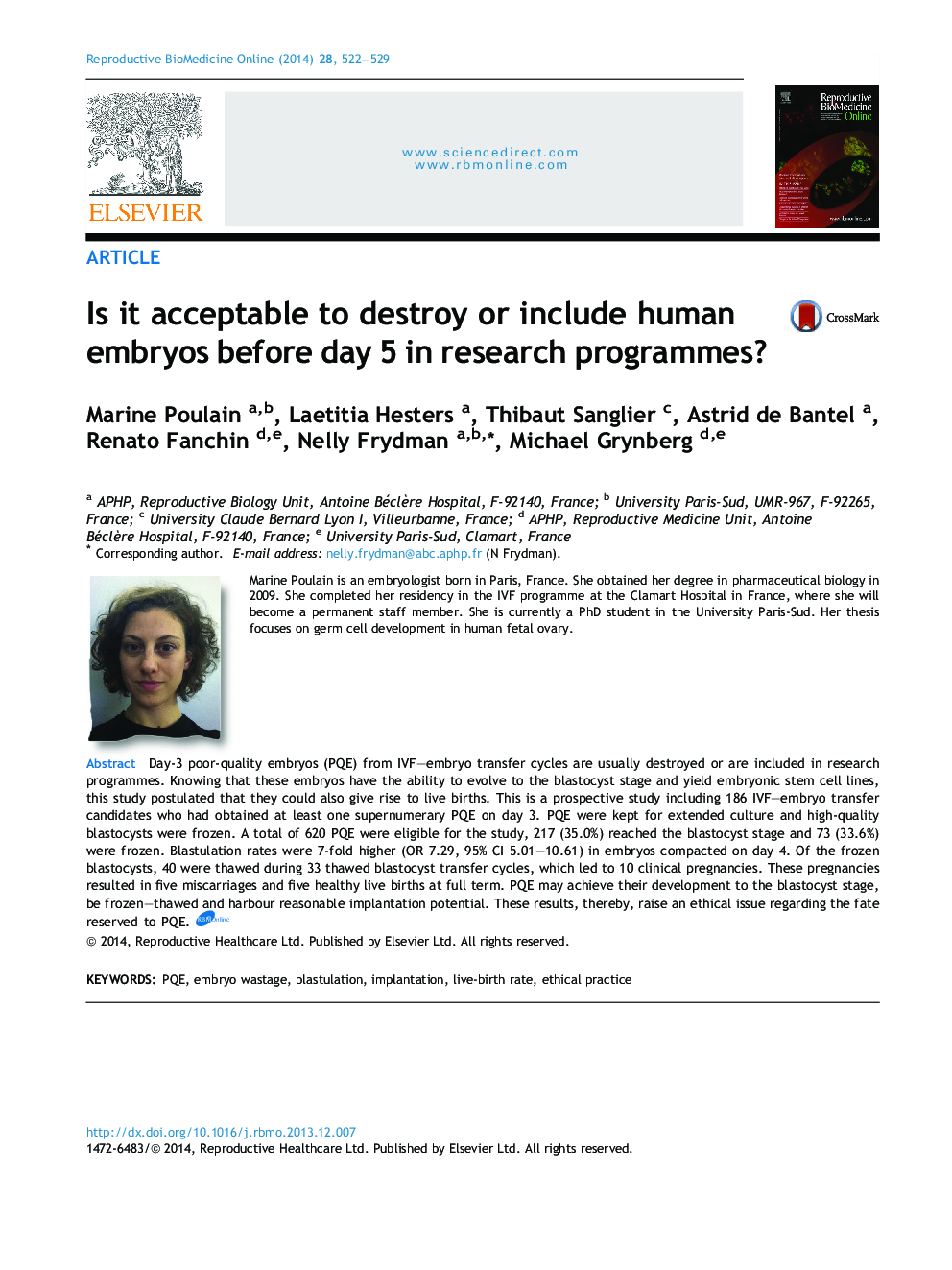| Article ID | Journal | Published Year | Pages | File Type |
|---|---|---|---|---|
| 3970207 | Reproductive BioMedicine Online | 2014 | 8 Pages |
Day-3 poor-quality embryos (PQE) from IVF–embryo transfer cycles are usually destroyed or are included in research programmes. Knowing that these embryos have the ability to evolve to the blastocyst stage and yield embryonic stem cell lines, this study postulated that they could also give rise to live births. This is a prospective study including 186 IVF–embryo transfer candidates who had obtained at least one supernumerary PQE on day 3. PQE were kept for extended culture and high-quality blastocysts were frozen. A total of 620 PQE were eligible for the study, 217 (35.0%) reached the blastocyst stage and 73 (33.6%) were frozen. Blastulation rates were 7-fold higher (OR 7.29, 95% CI 5.01–10.61) in embryos compacted on day 4. Of the frozen blastocysts, 40 were thawed during 33 thawed blastocyst transfer cycles, which led to 10 clinical pregnancies. These pregnancies resulted in five miscarriages and five healthy live births at full term. PQE may achieve their development to the blastocyst stage, be frozen–thawed and harbour reasonable implantation potential. These results, thereby, raise an ethical issue regarding the fate reserved to PQE.In most IVF clinics around the world, day-3 embryos are submitted to embryo classification systems to select embryos with the higher implantation potential. This classification is usually based on the evaluation of the number of blastomeres, the degree of fragmentation, the symmetry of the cells and the presence of multinucleation. Thus, some embryos are described as poor-quality embryos (PQE) and may be destroyed or included in research programmes. Knowing that PQE have the ability to evolve to the blastocyst stage and yield embryonic stem cell lines, the authors hypothesized that PQE could also give rise to live births. They conducted a prospective study including 186 IVF–embryo transfer candidates who had obtained at least one supernumerary PQE on day 3. PQE were kept for extended culture and high quality blastocysts were frozen. Out of 620 PQE eligible for this study, 217 (35.0%) reached the blastocyst stage and 73 (33.6%) were frozen. Of these blastocysts, 40 were thawed during 33 thawed blastocyst transfer cycles, which led to 10 clinical pregnancies. These pregnancies resulted in five miscarriages and five healthy live births at full term. PQE may achieve their development to the blastocyst stage, be frozen–thawed and harbour a reasonable chance of implantation. These results, thereby, raise a ethical issue regarding the fate of PQE.
